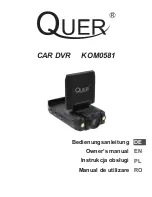
Overview — Screening camera modes
temperature alarm will trigger if the measured temperature is above the alarm limit. The
alarm limit is the sum of the moving average and the allowed deviation.
8.4.2
Max/min temperature range
If the spread of values in a data set is large, the average will be difficult to use for evalua-
tion of individual values. For that reason, the screening algorithm will only work with tem-
peratures that are within a certain temperature range. If the measured temperature is
outside this range, the camera will display a “Too cold/warm” message.
For example, a person arriving to the office by bike will be cold in the face and may get a
“Too cold” message even if the outdoor temperature is at room level. For an efficient
screening flow, it is recommended to allow persons to stabilize their temperature before
they are screened. Thanks to a high blood flow, the skin around the tear duct adapts to
the ambient temperature within a few minutes.
The temperature range is defined by a maximum and minimum temperature limit, which
is possible to change by settings. It is recommended to use the default values. The set-
tings should only be changed if you experience problems and understand the
consequences.
In a situation where all visitors come directly from a cold outdoor environment, without
possibility to adapt to the indoor temperature, the screening flow may be disturbed by
many “Too cold” messages. By changing the minimum temperature setting to a lower val-
ue, there will be fewer “Too cold” messages.
If you have visitors that come both from a cold outdoor environment and a warm indoor
environment, you need to be careful about changing the minimum temperature setting.
Persons coming from a cold outdoor environment will have a lower skin temperature, re-
gardless of their body temperature.
If people coming directly from a cold environment are not stopped by a “Too cold” mes-
sage, they may not have time to adapt their temperature to the indoor temperature before
the screening algorithm performs the evaluation. This means there is a risk that people
with an elevated temperature pass the screening, since the skin temperature of their cold
faces may be below the alarm limit.
If people coming directly from a cold environment are allowed to adapt their temperature
to the indoor temperature before the evaluation, only persons with a normal temperature
will pass the screening and there will be a screening alarm for persons with an elevated
temperature.
#T810583; r. AA/75420/75423; en-US
37
















































